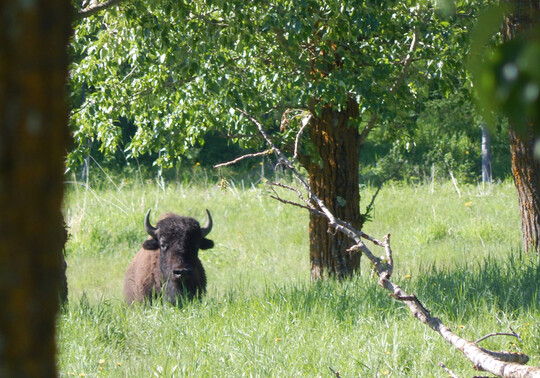Broadening Our Understanding of Wildlife Management

Wildlife management is an incredibly important part of environmental conservation. Throughout history, humans across many cultures have developed unique approaches to managing wildlife. We know the importance of ecological health and biodiversity to our collective future. It’s also important to acknowledge how Indigenous perspectives can help us understand and embrace an inclusive and holistic approach to living with and managing the natural world.
Euro-Canadian history regales us with stories of plentiful wildlife: cod on the east coast, bison on the plains and caribou in northern forests at the time of contact. Regrettably, overharvesting by incoming settlers who assumed these resources were endless, eroded populations to near extinction in many cases. In North America, European contact and imperialists seeking furs and other resources in new lands not only influenced natural ecology but affected a shift in Indigenous relationships to animals. With dwindling access to food, Indigenous peoples also died in massive numbers.
Early western conservationists, like Aldo Leopold recognized the disastrous consequences of unchecked extraction on species and ecosystems. Leopold, Theodore Roosevelt and others helped develop strategies to ensure that wildlife would be plentiful for future generations. Among Leopold’s best known ideas is the “land ethic,” which calls for an ethical, caring relationship between people and nature[1]. Collectively, early Western conservationists would also firmly establish the value of hunting and angling in North American indefinitely. This emerging conservation paradigm was solidly grounded in a Western European Christian worldview where humans have dominion over all other species. The idea of hierarchy over other animals is where western philosophy differs significantly from Indigenous peoples’ insights on how to live harmoniously with the land.
There is no question that much is owed to early conservationists and the establishment of a North American model (NAM) of wildlife management. NAM strategies were monumental in their ability to shift the paradigm of unlimited harvests and wild game markets that marked early contact. Elk, for example, are now thriving in areas of the USA and Canada where they had been nearly wiped out and many other species have experienced similar rehabilitations. It is worth noting that the cause of those near extinctions was the settlers themselves. Now their descendants are left to deal with the ramifications of their historical actions.
Indigenous peoples living on this continent for millennia were not immune to times of scarcity caused by their actions. Oral histories from many Indigenous Nations include dire times when hunters could not find any animals to feed their communities. These stories nearly always offer lessons about greed and failure to live up to the treaties they had made with animals; animals who had agreed to feed, clothe and nourish them. Because of broken covenants, the animals who were considered equal partners in these agreements, left since they were not being respected. In response, Indigenous peoples across these lands recommitted to the highly rigorous codes of ethics that honour their other-than-human relatives.
It is a common myth that Indigenous peoples did not manage their environments. In fact they did and continue to engage in holistic management practices that stem from their own unique cultural worldviews. Many Nations consider themselves part of a web connected to all other beings rather than sitting atop a hierarchy of other beings. The unfortunate truth is, due to colonization, residential schools and various other legislation, some Indigenous peoples have fractured or incomplete knowledges of what agreements their Nations made with their other-than-human relatives. In spite of this, Indigenous peoples are reconnecting with their worldviews, responsibilities and honouring their ancestors by re-establishing harmony with their lands. Indigenous protected and conserved areas (IPCA’s) are one way Indigenous Nations are re-enacting their original instructions to the land and bringing back populations of animals and plants that have been nearly lost.
Both western and Indigenous peoples have experienced periods where they thought that the animals they rely on may never return due to negligence and carelessness. But, despite the differing philosophies behind each, both western and Indigenous models of wildlife management have also helped to revive and re-establish robust populations of various species taken to the brink.
In 2021, Hessami et al[2] put forth the idea of finding parallels between these two worldviews to expand and evolve the North American model of wildlife management beyond a singular western approach toward a more holistic model that includes Indigenous knowledges. Indeed, our future and the future of our shared environment lies in embracing the catalogue of millennia-old intimate knowledges that support our common goals of living harmoniously on the lands that we call home.
[1] https://www.aldoleopold.org/about/aldo-leopold/
[2] https://wildlife.org/weaving-indigenous-knowledge-into-the-north-american-model/